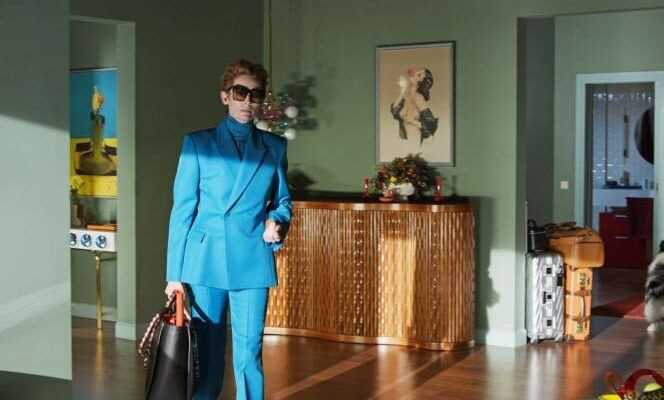Where does this feeling of freedom come from in Pedro Almodovar’s new film, a short film freely inspired by Jean Cocteau’s play? The human voice ? Written in 1929, this monologue on the telephone of a departed lover, named “Elle”, was premiered in 1930 by Berthe Bovy at the Comédie-Française in Paris. Text a little whiny by a woman who both suffers and cash in on the breakup, stuffing her words with countless ” honey “.
The Spanish filmmaker obviously had fun. Is it the joy of finally adapting, at the age of 71, this text that he already cited in his first feature film, The Law of Desire (1987), and who was at the origin of Women on the verge of a nervous breakdown (1988)? Is it the pleasure of tackling this “monument” which has been interpreted many times – Simone Signoret made a full recording of it which won her the Grand Prix du CD in 1964? Is it the fact of allowing yourself a much more insolent and demanding rewrite? Or the excitement of filming for the first time in English, entrusting the role to the Scottish Tilda Swinton, who “is almodovarized (red outfits, vengeful looks) while remaining one of a kind, in her pallor blonde?
After Spain, where the film experienced the joys of the cinema on October 21, 2020, The human voice is released on DVD in France on Friday March 19, as well as on the platforms.
“Break” the illusion of the decor
Cocteau’s work has haunted Almodovar since the 1970s, when he discovered Rosselini’s film adaptation of it, Amore (1948), with Anna Magnani. But, for the Spanish filmmaker, The human voice was not to stretch on a feature film. In addition, concerned about the “moral autonomy” of the heroine, neglected and deceived, he wanted to find a way out worthy of betrayal.
In The human voice, Almodovar experiments and empties his toolbox. A liberating gesture that allows him to “build” something else while retaining his universe, bright colors, pop art… The filmmaker wanted to “break” the illusion of the cinematographic setting by filming the studio in which the couple’s false apartment is located. Subtle idea of staging that allows Tilda Swinton – equipped with connected earphones – to wander between “backstage” and stage, relieved of the smartphone, and to blur the tracks: are we at the cinema, on the stage of a theater ? In this performance that looks like a Warholian factory, we could also believe that this woman wanders in an empty shell, a place emptied of its artists.
You have 29.25% of this article left to read. The rest is for subscribers only.
